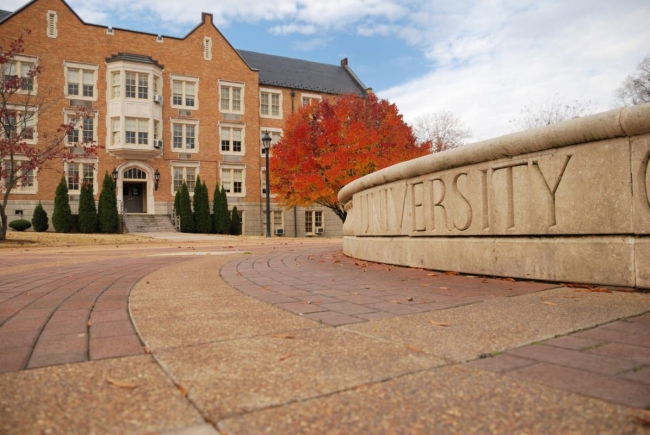You have /5 articles left.
Sign up for a free account or log in.

Istockphoto.com/sshepard
Virtually all of higher education is coping with severe disruptions amid the coronavirus pandemic. Several questions about the crisis that readers submitted in response to requests from Inside Higher Ed revolved around teleworking and employment status, or on college fundraising efforts during the crisis.
To seek answers from experts, Inside Higher Ed reached out to Andy Brantley, president and CEO of the College and University Professional Association for Human Resources (CUPA-HR); Matthew Lambert, vice president for university advancement at William & Mary; and Linda Durant, vice president of development at the Council for Advancement and Support of Education (CASE).
Their lightly edited responses via email are below. Inside Higher Ed plans to make Q&As like this one a regular feature in coming weeks or months. So please keep your questions coming, as comments on articles or sent to Covid19@insidehighered.com
Q: What goes into making the big shift to remote work happen at colleges and universities?
Brantley: During the last two weeks, human resources leaders have worked with presidents, provosts, vice presidents, deans and other managers to make unprecedented changes to work assignments and work processes. Teleworking, which was the exception just two weeks ago, has now become the norm. These changes and transitions have required policy changes and the creation of new policies to manage workforces more diverse than other employers across the country.
Q: What sort of policy changes?
Brantley: Human resources leaders will need to make more changes during the next weeks as teleworking employees attempt to complete their job duties while caring for children who cannot go to daycare, teaching their children who must now be homeschooled and addressing the other challenges created by this crisis.
Human resources leaders will also have to provide guidance and support for employees who are not able to work from home. How long can the institution continue paying all employees? Are there part-time assignments these employees can complete from home? If employees have to be laid off before the institution can resume regular operations, what policies and practices need to be in place to provide as much support as possible and return these colleagues to work as quickly as possible?
Q: Which institutions are handling this challenge well so far?
Brantley: Here is an example from the president of Indiana University at Bloomington. All institutions will not be able to make this commitment, but I am so pleased to see that IU leaders are making this commitment to their employees. The challenges we face as higher ed and as a nation have created significant stress and uncertainty for everyone. For IU employees, the promise that their pay will continue through at least June 30 removes one significant uncertainty that is still a burden for many Americans.
Q: How is the crisis affecting college and university fundraising campaigns?
Durant: Many institutions have not stopped their campaigns and instead may be changing the funding priorities during this time of crisis. One lesson learned during the last recession is that it was especially important during this time to continue talking and communicating with donors, alumni and all constituents. These conversations often lead to the donor deciding to make their gift or pledge despite the current situation or because of the current situation.
A good fundraiser does not make assumptions about their donors and what they want to do or are feeling at this time. That is why these conversations are vital to the campaign and the institution. All donors have unique situations, and it is ultimately their decision as to what they want to do now; for many, their loyalty and trust in the institution means they want to give back now and show their support.
Q: How has William & Mary shifted its approach to fundraising?
Lambert: Like most senior leaders (in advancement or elsewhere) in higher education around the country, we’ve had to build a new playbook, since this is quite different from previous crises such as Sept. 11, Hurricane Katrina and the Great Recession. We are in a unique place, in the final three months of our campaign, so we are close to our finish line but not yet quite there.
Over the past few weeks, as events related to COVID-19 have transpired at such a rapid pace, at William & Mary we have refocused our fundraising efforts on helping students facing emergency situations, including our international students who have no way of returning home to their families. William & Mary is currently fully operational, and we have moved all our classes online.
We are doing all we can to facilitate a healthy and safe virtual teaching and learning environment for our students and faculty. As you can imagine, in order to fully transition to virtual learning, we needed to take swift action. We needed to be agile and innovative. Private support will enable us to continue to be nimble and innovative.
Q: Can a college raise funds to help with this crisis?
Durant: Colleges are indeed actively fundraising during these times. Critically important to them are appeals for emergency loans and financial aid funds for students, in order to continue their education, and for some to have a safe place to live and provide for their basic needs. Emory University and the University of Cincinnati are examples of just two that are doing this now.
Also, universities with medical schools and centers are fundraising to provide critical funding to continue their research and/or their services to the community. Institutions continue to do their annual appeals, and the money raised will be for these priorities. A good number of the alumni donors understand the need for the institution to have unrestricted dollars at a time like this to help them keep the mission of the institution alive.
Lambert: While the pandemic has been (and will continue to be) devastating -- from a public health and financial standpoint -- it has brought our community together (at a distance, of course) like never before. We’ve been able to create a micro-campaign, if you will, that will enable us to meet the immediate needs of our most vulnerable students while serving as strategic partner in the effort. We also know that our faculty are completely reinventing their teaching model in real time -- for many, this is their first time teaching in a virtual environment. So we also have enormous opportunities to support the kinds of retraining that will enable our faculty to deliver a high-quality education in a new mode. That is a tremendous opportunity for this short-term emergency, but also for the longer term.
Q: Should new campaigns be postponed or changed?
Durant: These types of decisions are not made lightly and are done so after many conversations with the institutions’ leadership, the advancement professionals and the campaign leadership, which typically includes a number of trustees of the institution. There really isn’t one clear-cut answer to this -- it depends on the institution, what their circumstances are now, how far along in the campaign are they, what are the priorities of the campaign.
Lambert: While I would never presume to answer that question for another university, this is probably not a time to be launching an ambitious new campaign. Our campaign director often shares quotes from the late Jerry Panas, who reminded us after the Great Recession that “There is no ‘perfect moment’ to raise money. There is no such thing as a time when all possible factors are in your favor.” Launching a campaign often involves crystallizing and sharing of objectives, goals and vision, and engaging donors in a “join our movement” moment. While that does not need to and should not stop, you do have to reimagine your approach and ensure you are not tone-deaf in your outreach (particularly if launching a campaign includes the traditional pomp and circumstance).
Fundraising should not stop during a time like this but rather can be directed to help those being impacted by the crisis. Now is a time to be in even more regular and thoughtful communication with donors to deepen the relationships and assure them that the institution is committed to leading and serving during this difficult time. I am personally calling donors every single day, and we are encouraging our team to do the same -- to check on their health and well-being, to ask how they are coping with the emergency in their business or organization, and to remind them that William & Mary is their 80-year home and we stand ready to help however we can. Two-thirds of our alumni donor base consists of consecutive-year donors, so we feel optimistic and confident that we have developed a base that can weather a crisis such as this -- we will be there for them, as they are for alma mater.
Q: How does the appeal to potential donors change?
Lambert: We must do all that we can to be sensitive to the evolving situation and adapt a different set of messaging and priorities that align with current circumstances. As you might imagine, among my leadership team we have had healthy debate about how and when and in what ways we can resume “normal” fundraising activities, and right now there is no easy or clear answer.
Instead, we are taking the approach of remaining committed to our core philosophy -- in essence, we are seeking to establish 80-year relationships with our alumni and donors that last throughout their lifetimes and will span numerous emergencies, tragedies, celebrations, campaigns, highs and lows. If we do our jobs thoughtfully and well, those relationships will endure any single episode along the way, and they will see and understand the ongoing priorities of the university, the ways they can help and have an impact, and we will know that when they can help, they will.
With that in mind, while we are only a few months from successfully concluding our $1 billion For the Bold campaign, we decided we had to change course a bit. So, we made some tough decisions -- the right decisions -- because our students, faculty, staff and William & Mary as a whole are relying on private support during this crisis. We pivoted and reprioritized. We even moved our biggest day of giving (One Tribe One Day) back several months from April to June. And we are creating new and interesting virtual events for our alumni to engage with one another and the university. We’ve asked ourselves, “How do we remain relevant to our alumni and donors? How do we help them as they work through these challenges in their personal and professional lives? How do we continue to build those 80-year relationships?”








